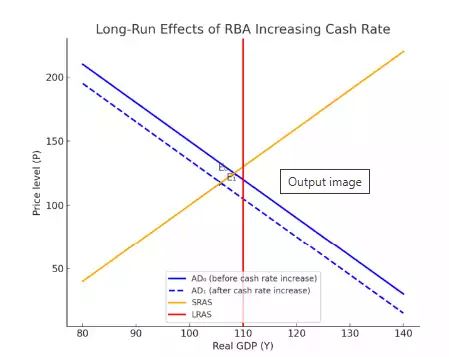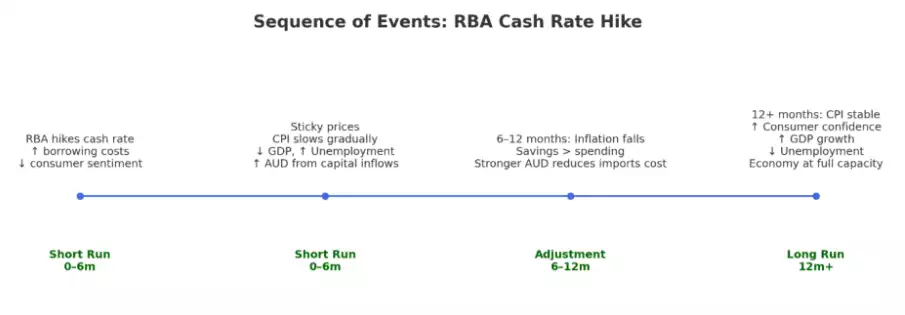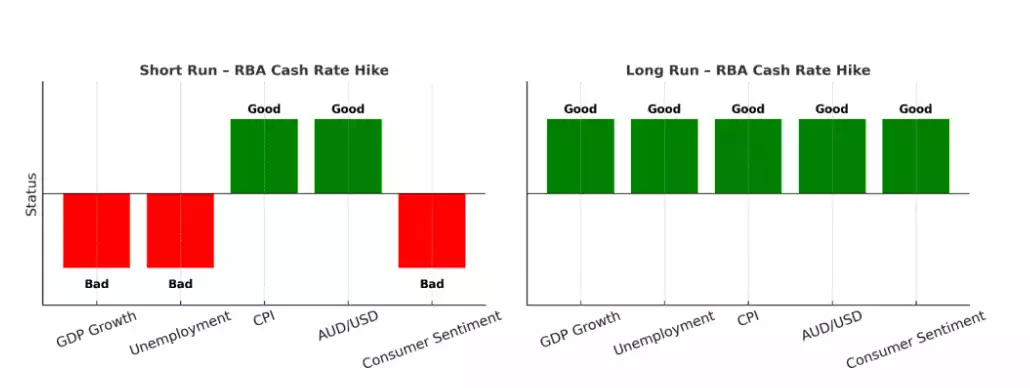Laying the Foundations for Sustainable Growth – How Higher Interest Rates Impact the Economy
News
|
Posted 25/08/2025
|
1377
The Australian economy is showing signs of improvement, yet consumer confidence remains subdued—likely due to elevated borrowing costs, reduced affordability, and a rising cost of living. With Gross Domestic Product (GDP) trending upward and Consumer Price Index (CPI) inflation easing, confidence is expected to recover in time, particularly following the recent lift in business sentiment. When cash rates rise, borrowing becomes more expensive in the short term, which dampens consumer sentiment and cools demand, leading to slower CPI growth and a dip in GDP. Over the long term, however, the economy is self-correcting and will adjust toward a sustainable equilibrium.
Introduction
Cut rates now and risk reigniting inflation, or hold firm and be accused of stifling recovery. In an economy still nursing post-COVID scars, either option will attract criticism.
By restraining immediate consumption through higher cash rates, the RBA is prioritising long-term economic stability over short-term relief. But this has come at the cost of consumer confidence, with households feeling the strain of higher borrowing costs, reduced affordability, and increased living expenses.
RBA Increasing the Cash Rate
Raising the cash rate slows near-term consumption but aims to restore consumer and business confidence over time as inflation falls. This process works through the monetary policy transmission mechanism, with distinct short- and long-term effects.
Short-Run Effect
Higher interest rates create immediate pain in the economy. Consumer sentiment weakens as borrowing becomes more expensive for individuals and institutions. This reduces demand and slows CPI growth, although prices remain ‘sticky’ in the short run due to contracts and supply-side constraints. As spending slows, people prioritise saving, leading to lower demand, reduced production, and a decline in GDP. Unemployment may also rise, as lower demand reduces hiring and triggers job losses.
On the upside, the exchange rate typically appreciates, as higher interest rates attract foreign capital. This signals the RBA’s commitment to controlling inflation and adds to investor confidence.
Long-Run Effect
It typically takes 6–12 months for CPI inflation to decline meaningfully due to price stickiness. But as purchasing power is restored, households and businesses regain confidence, contributing to greater economic stability and predictability.
Once inflation subsides and affordability improves, consumer sentiment lifts. This encourages consumption, which drives GDP growth. As economic activity expands, unemployment falls as businesses increase hiring to meet growing demand.

Eventually, inflation expectations stabilise, and the economy returns to its long-run equilibrium at full productive capacity, albeit at a lower price level than before the rate hikes. This period of short-term slowdown sets the stage for a healthier, more sustainable economic trajectory.
Cash Hike: From Short to Long-Run

What next?

If the RBA continues to raise cash rates to anchor inflation, it will strengthen economic foundations and pave the way for long-term growth in both GDP and employment. In time, the economy adjusts and corrects itself—moving toward equilibrium where supply and demand once again determine price, production, and distribution.
To quote economist Murray Rothbard:
“The lowering of time preference signifies an increase in willingness to forego present consumption for the sake of future consumption.”
Watch the insights video inspired by this article here - https://www.youtube.com/watch?v=DYhN9cweriw